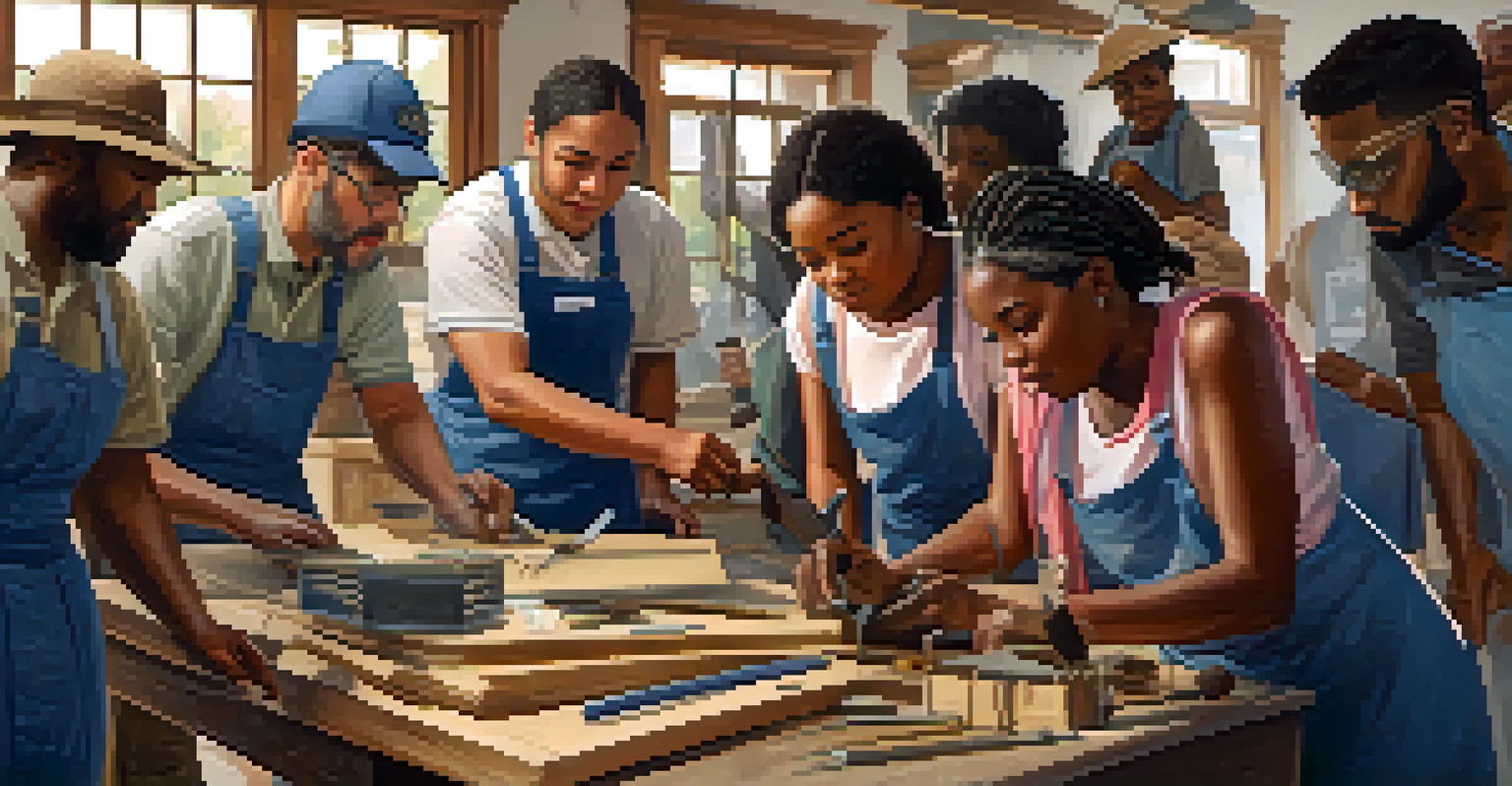The Role of Florida's Historical Preservation Organizations

Introduction to Florida's Historical Preservation Landscape
Florida is home to a rich tapestry of history that dates back centuries, influenced by various cultures and events. Historical preservation organizations play a crucial role in safeguarding this heritage for future generations. These organizations vary in size and scope, ranging from small local groups to large statewide networks.
Preservation is not just about saving old buildings, it's about saving the stories they tell.
Their primary mission is to identify, protect, and promote Florida’s historical sites and artifacts. By doing so, they help preserve the stories and legacies of those who came before us. It's a collaborative effort that involves not just preservation but also education and community engagement.
In this article, we will explore the different types of preservation organizations in Florida, their missions, and how they impact communities. From grassroots initiatives to statewide programs, these organizations are the unsung heroes of historical preservation.
Types of Historical Preservation Organizations in Florida
Florida's historical preservation landscape includes a variety of organizations, each with unique missions. Some focus on specific areas, such as architecture, archaeology, or cultural heritage, while others may address broader themes. For example, the Florida Trust for Historic Preservation works statewide to advocate for preservation efforts.

Local preservation societies often play a vital role at the community level, working to restore and maintain historical buildings that define their towns. These societies frequently organize events, workshops, and tours to educate the public about local history. Their grassroots approach fosters a sense of ownership and pride within the community.
Diverse Preservation Organizations
Florida has a variety of historical preservation organizations that focus on local heritage, architecture, and statewide advocacy.
Additionally, government agencies like the Florida Division of Historical Resources provide essential support and oversight. They help coordinate preservation efforts, offer grant funding, and develop policies that guide preservation initiatives across the state.
The Importance of Advocacy in Preservation Efforts
Advocacy is a cornerstone of historical preservation organizations, as they often champion the importance of protecting Florida's heritage. Through public awareness campaigns and lobbying efforts, these organizations strive to influence legislation that impacts historical sites. Without their voice, many sites could be overlooked or neglected.
History is who we are and why we are the way we are.
These organizations not only advocate for financial support but also educate communities about the significance of their local history. By fostering a sense of pride in cultural heritage, they inspire citizens to take action to protect their historical sites. This collective effort can lead to stronger community bonds and a deeper appreciation for history.
Moreover, successful advocacy can lead to the establishment of protective measures, such as local ordinances that safeguard historic districts. This ensures that future developments consider the historical context, allowing communities to grow while honoring their past.
Educational Programs and Community Engagement
Education is a key focus for historical preservation organizations in Florida. Many offer workshops, seminars, and educational materials to engage the public and raise awareness about preservation issues. These programs often cater to all age groups, ensuring that the importance of history resonates with both young and old.
Hands-on experiences, such as archaeological digs or restoration projects, can create a deeper connection to history. When community members participate in these activities, they gain a sense of ownership and responsibility for preserving their heritage. This active involvement can transform a passive interest in history into a lifelong passion.
Advocacy Drives Community Engagement
Advocacy is essential for historical preservation, as it educates communities and influences legislation to protect heritage sites.
Additionally, partnerships with schools and universities enhance educational outreach. By integrating local history into the curriculum, students can explore their heritage in a meaningful way, fostering a new generation of preservationists.
Challenges Facing Preservation Organizations
Despite their vital role, historical preservation organizations face numerous challenges. Funding is often a major hurdle, as grants and donations can fluctuate based on economic conditions. Limited financial resources can restrict the scope of preservation projects and educational initiatives.
Moreover, the rapid pace of development in Florida poses a significant threat to historical sites. As urban areas expand, many historical buildings are at risk of demolition or neglect. This urgency underscores the need for strong advocacy and community involvement to safeguard these irreplaceable assets.
Additionally, organizations must navigate complex regulations and policies that govern preservation efforts. Balancing the need for development with the desire to preserve history requires diplomacy and collaboration with various stakeholders, including developers, government agencies, and community members.
Success Stories: Florida's Iconic Preservation Projects
Florida boasts numerous success stories in historical preservation that highlight the effectiveness of dedicated organizations. One such example is the restoration of the historic Casa Monica Hotel in St. Augustine, a project that revitalized a treasured landmark while preserving its architectural integrity. This project showcased how preservation can breathe new life into historical sites.
Another noteworthy success is the preservation of the Florida Historic Capitol Museum in Tallahassee. After years of neglect, dedicated efforts transformed the building into a museum that tells the story of Florida's political history. This revitalization not only saved an important structure but also created a space for education and community engagement.
Challenges and Future Solutions
Preservation organizations face funding and development challenges but must innovate and collaborate to safeguard Florida's history.
These success stories demonstrate that with passion and perseverance, preservation organizations can make a significant impact. They inspire others to support and participate in preservation efforts, ensuring that Florida's history remains alive and accessible.
The Future of Historical Preservation in Florida
As we look to the future, the role of historical preservation organizations in Florida will only become more critical. With ongoing development pressures and climate change challenges, preserving our heritage requires innovative solutions and community collaboration. Organizations must adapt to these evolving circumstances while continuing to advocate for historical sites.
Emerging technologies also offer exciting opportunities for preservation. Digital archiving, virtual tours, and interactive exhibits can engage younger audiences and broaden access to historical content. By embracing these innovations, organizations can enhance their educational outreach and preservation efforts.

Ultimately, the future of Florida's historical preservation hinges on community involvement and awareness. By fostering a collective appreciation for history, we can ensure that our heritage is valued, celebrated, and preserved for generations to come.